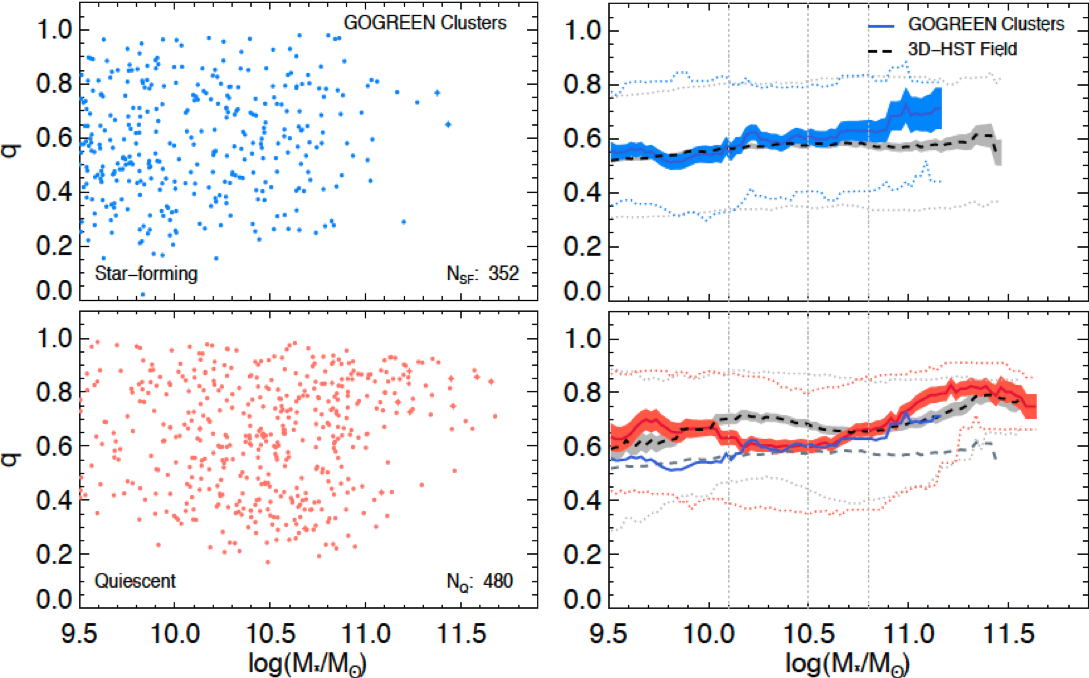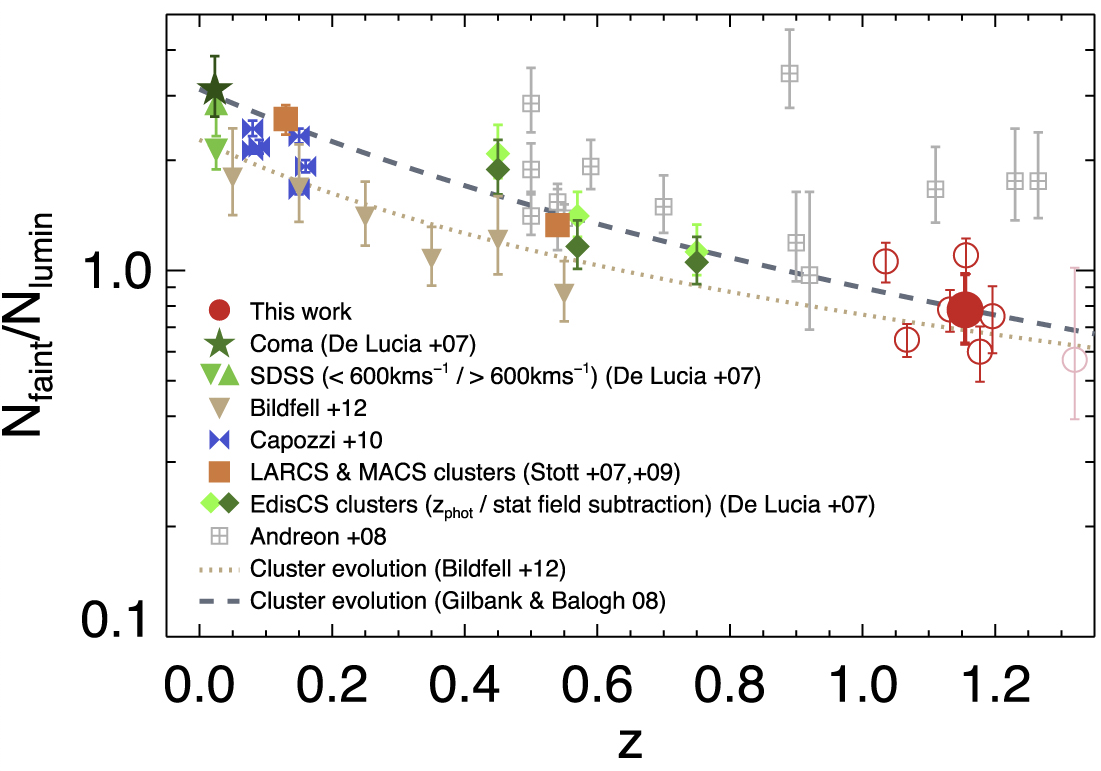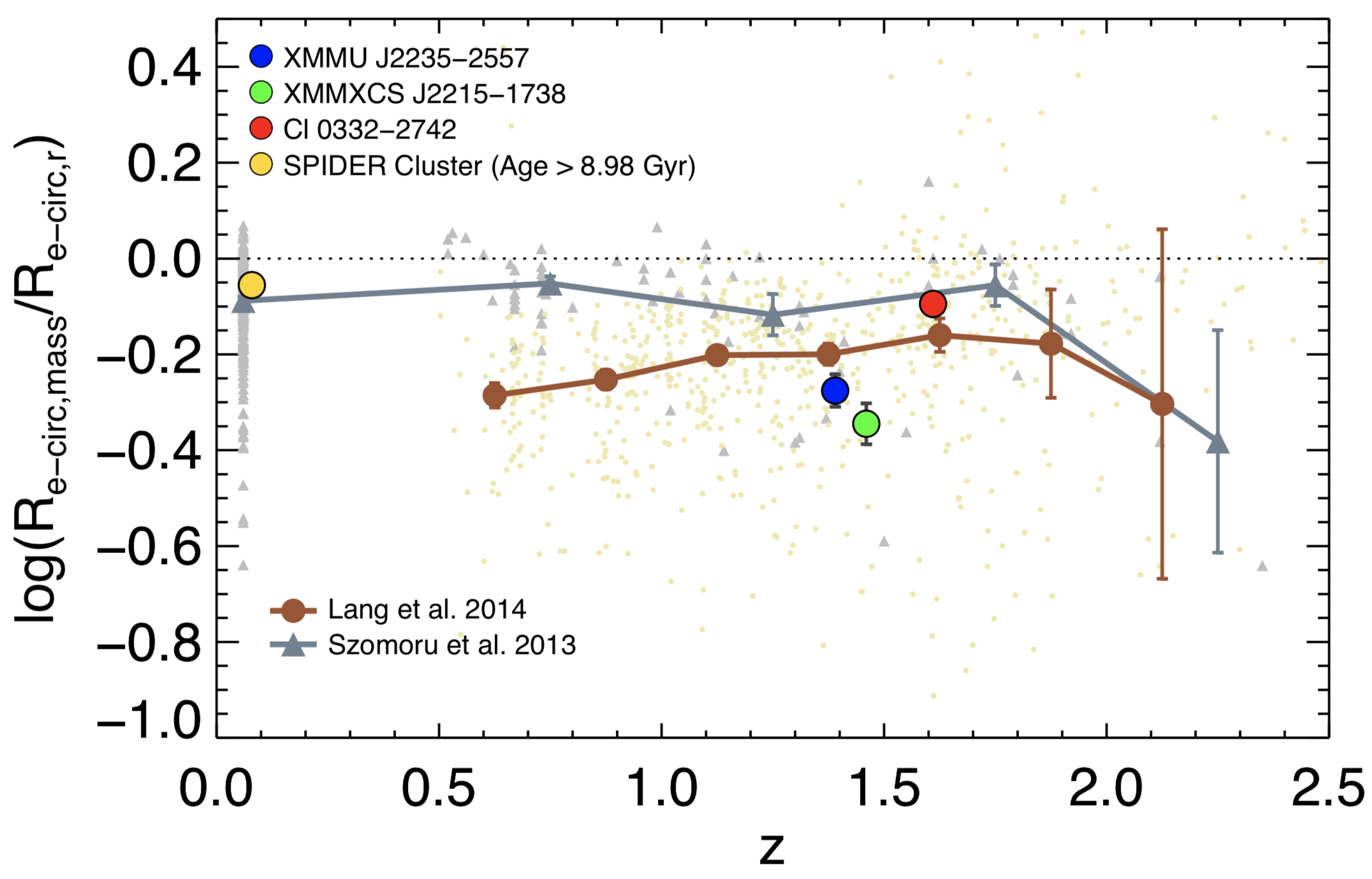First author publications

“The GOGREEN Survey: Evidence of an Excess of Quiescent Disks in Clusters at 1.0<z<1.4”
arXiv:2107.03403 (Accepted for publication in ApJ)
We present results on the measured shapes of galaxies in galaxy clusters at 1.0<z<1.4 from the GOGREEN survey. We measure the axis ratio (q) of the cluster galaxies from Hubble Space Telescope imaging and compare them with a field sample. Comparing the axis ratio distributions between clusters and the field, we find that the distributions for quiescent galaxies in the two environments are distinct, most remarkably in 10.1<log(M_sun)<10.5 where clusters show a flatter distribution, with an excess at low q. The cluster and field sample difference is consistent with an excess of flattened oblate quiescent galaxies in clusters. The oblate population contribution drops at high masses, resulting in a narrower q distribution in the massive population than at lower masses. Our results suggest that environmental quenching mechanism(s) likely produce a population that has a different morphological mix than those resulting from the dominant mechanism in the field.

“The Rest-frame H-band Luminosity Function of Red Sequence Galaxies in Clusters at 1.0<z<1.3”
ApJ, 880, 119 (2019)
By comparing the rest-frame H-band luminosity functions of red-sequence galaxies in seven GOGREEN clusters at 1.0<z<1.3 with a sample of lower redshift clusters at z~0.6, we find a significant evolution of the faint end of the red sequence over the ~2.6 Gyr between the two samples, with the mean faint-end red-sequence luminosity growing by more than a factor of 2. The faint-to-luminous ratio of our sample is consistent with the trend of decreasing ratio with increasing redshift proposed in previous studies. Our results support the picture that the buildup of faint red-sequence galaxies occurs gradually over time and suggest that faint cluster galaxies, similar to bright cluster galaxies, already experience the quenching effect induced by the environment at z~1.15.

“The KMOS Cluster Survey (KCS). II. The Effect of Environment on the Structural Properties of Massive Cluster Galaxies at Redshift 1.39<z<1.61”
ApJ, 856, 8 (2018)

“Sizes, Colour gradients and Resolved Stellar Mass Distributions for the Massive Cluster Galaxies in XMMUJ2235-2557 at z = 1.39”
MNRAS, 458, 3181C (2016)
We analyse the sizes, colour gradients and resolved stellar mass distributions for 36 massive and passive galaxies in the cluster XMMUJ2235-2557 at z = 1.39 using optical and near-infrared Hubble Space Telescope imaging. We develop a technique to generate spatially resolved stellar mass maps using an empirical relationship between M/L and (z-H) color. Using these to derive mass-weighted Sérsic fits, we find that the mass-weighted sizes of these galaxies are ~41 per cent smaller than their rest-frame r-band counterparts compared with an average of ~12 per cent at z~0. We attribute this evolution to the evolution in the M/L and colour gradient. The median z-H colour gradient of these galaxies is negative and twice the local value. The evolution is likely caused by an evolution in age gradients. This is consistent with the inside-out growth picture of passive galaxies, and favours a gradual mass growth mechanism, such as minor mergers.